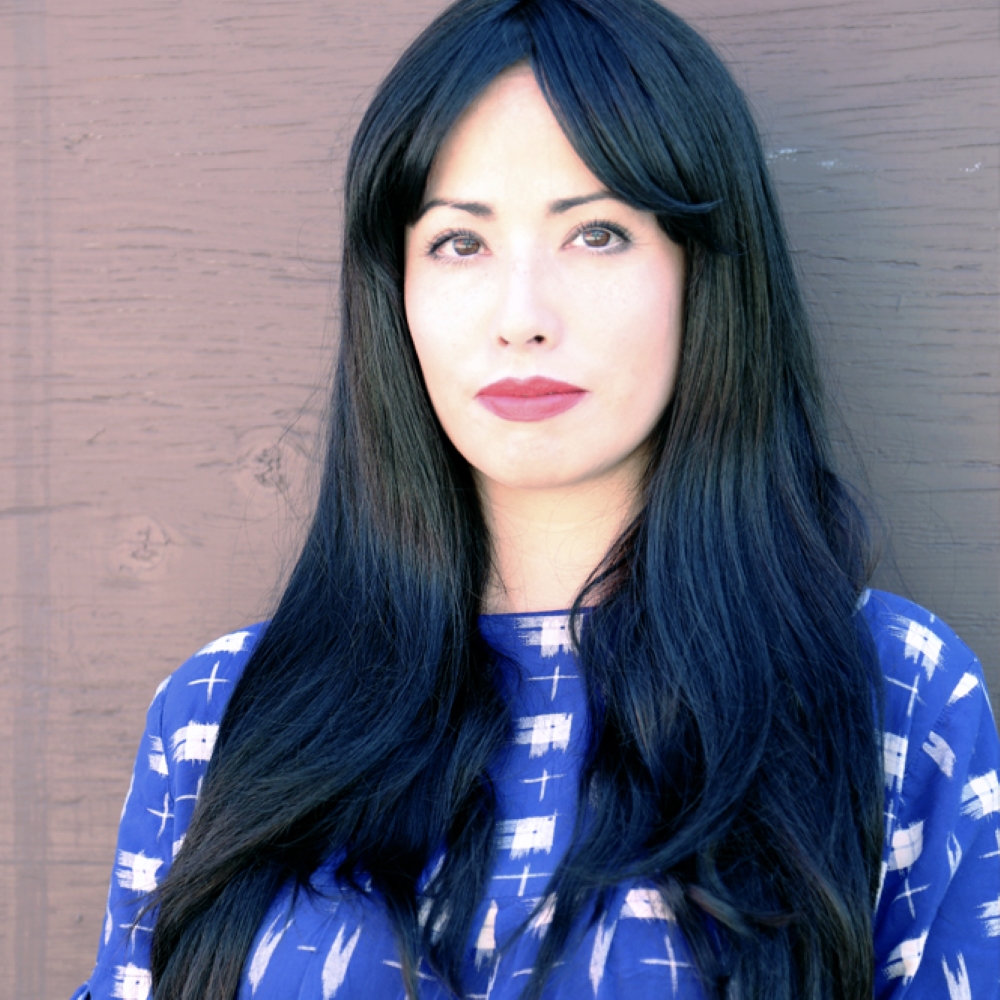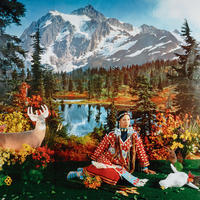More about Wendy Red Star
Works by Wendy Red Star

Sr. Contributor
Like many other contemporary Native American artists, Wendy Red Star uses humor, irony, personal experiences, and expressions of her identity in her work.
Red Star is probably best known for her photographic works, but she has also created art using video, textiles, sound, sculpture, and performance. Red Star’s art is meant to tell a story, make a commentary on aspects of life for Native Americans, or point out the stereotypes that many people have of Native Americans.
Red Star was born in Billings, Montana and grew up in the tiny town of Pryor, in the Apsaalooké (Crow) Nation Reservation (“Crow” is an English mistranslation of “Children of the Long-Beaked Bird”). Her ancestry is from her Native father and Irish mother; at times this led to her (and her classmates) questioning her identity as a young girl. Red Star left the reservation to go to school at Montana State University in Bozeman, where she felt she was treated like an “other,” possibly because people didn’t feel comfortable with her Native identity and culture-based artwork. This “otherness” continued throughout her time during graduate school at UCLA, to the point where she even found herself doubting whether she should continue making art about her Native culture and experiences. She managed to quash any misgivings she may have had, and carry on with her artistic vision.
Red Star’s paternal grandmother, Amy Bright Wings Red Star, was a skilled maker of traditional Crow clothing and beadwork; she passed along her talents and knowledge of this craft to Wendy, who often creates and uses these items in her own art. She still considers sewing to be one of her “greatest talents,” and it’s one that can be seen in some of her photographs and textile work. Another family member who had an influence on her was her uncle, Kevin Red Star, a successful painter, who also focuses on Native and Crow culture in his work.
Red Star’s undergraduate and graduate level of art specialization were both sculpture, so it’s no surprise that she has created some large installation pieces, such as Tokens, Gold, & Glory, and The Indian Corner. The word “sculpture” in an art context can mean so much more than the classic idea of something like Michelangelo’s David or Luis Jiménez’s Blue Mustang; in the case of Wendy Red Star, she challenges the viewer to think about something other than a pretty piece of art.
Although artists have included themselves in their own work for centuries, it’s perhaps a little less common in modern photography in a fine arts context, though Cindy Sherman paved the way. Like Sherman, Red Star places herself in many of her photographs, usually wearing a piece of traditional Crow clothing that she made herself. She’s not afraid to use humor as well as a touch of cynicism, as seen in The Last Thanks, where she has a variety of items spread out on a table, including packs of Natural American Spirit cigarettes; this brand has also been used by Native American artist David Bradley in his sculpture, aptly titled American Spirit.
When asked about her work, Red Star had this to say: “There’s a whole notion of being ‘authentic,’ Your art is supposed to look like the 19th century, like we’re a dead culture that never evolved.” This has been a recurring theme for many years, going back to Edward Curtis and his photos of Native Americans. In one of Red Star’s more racy series of photos, White Squaw, she puts her own image on the covers of a series of novels starring the sexy “White Squaw," with titles including Track Tramp, Abilene Tight Spot, and Bareback Beauty...you get the idea. Yes, these are real books, and the taglines on each are even better (or worse, depending on your point of view.)
Sources
- Beck, Abaki. “Decolonizing Photography: A Conversation with Wendy Red Star.” Aperture, July 28, 2020. https://aperture.org/editorial/wendy-red-star/.
- Dundas, Zach. “Wendy Red Star Totally Conquers the Wild Frontier.” Portland Monthly. Portland Monthly, March 30, 2017. https://www.pdxmonthly.com/articles/2015/4/2/local-artist-wendy-red-sta….
- Editorial, Artsy, and Sandra Hale Schulman. “11 Influential Native American Artists.” Artsy, November 9, 2021. https://www.artsy.net/article/artsy-editorial-11-influential-native-ame…
- Mentzer, Morgan. Wendy Red Star, 2018. https://www.arts.gov/stories/magazine/2018/1/women-arts-galvanizing-enc….
- Rogers, Adrian. “Artist Views Native Life with Modern Lens.” Spokesman.com. The Spokesman-Review, February 6, 2015. https://www.spokesman.com/stories/2015/feb/06/artist-views-native-life-….
- Snow, Jordyn. “Wendy Red Star.” prezi.com, April 27, 2015. https://prezi.com/s1w-gzyur996/wendy-red-star/.
- “Wendy Red Star: Mass Moca.” MASS MoCA | Massachusetts Museum of Contemporary Art, June 4, 2021. https://massmoca.org/event/wendy-red-star/.
- Zarkovich, J. (2017, May 31). "Making Noise: Wendy Red Star" by Josephine Zarkovich. CUE Art Foundation. https://cueartfoundation.org/young-art-critics-essays/making-noise-wend…
Featured Content
Here is what Wikipedia says about Wendy Red Star
Wendy Red Star (born 1981) is an Apsáalooke contemporary multimedia artist born in Billings, Montana, in the United States. Her humorous approach and use of Native American images from traditional media draw the viewer into her work, while also confronting romanticized representations. She juxtaposes popular depictions of Native Americans with authentic cultural and gender identities. Her work has been described as "funny, brash, and surreal". Red Star was awarded a MacArthur Fellowship in 2024.
Check out the full Wikipedia article about Wendy Red Star











